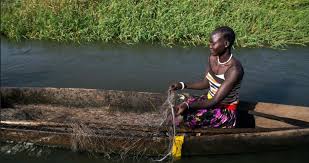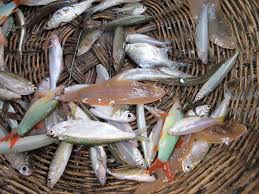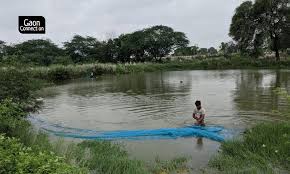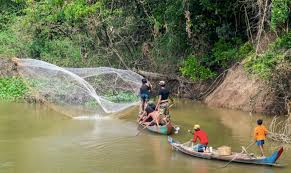Inland fisheries refer to the fishing activities that take place in freshwater bodies such as rivers, lakes, ponds, and reservoirs. They play a crucial role in the livelihoods of millions of people worldwide, contributing to food security, nutrition, and income generation.
These fisheries differ significantly from marine fisheries, which occur in saltwater environments. Inland fisheries provide a sustainable source of fish, which is vital for many communities, especially those in rural areas where access to protein-rich foods can be limited.
Globally, inland fisheries encompass a wide range of ecosystems, including freshwater lakes, rivers, wetlands, and aquaculture systems. They are characterized by their diverse species and ecological interactions, which vary depending on geographic location and water quality.
The significance of inland fisheries extends beyond just food production; they also contribute to cultural practices, recreational activities, and ecosystem services. Many communities have traditional fishing practices that are closely linked to their cultural identities, making the preservation of these fisheries essential for maintaining their heritage.
Inland fisheries are a source of both wild-caught fish and farmed fish. While wild fisheries depend on the natural fish populations within freshwater ecosystems, aquaculture involves cultivating fish in controlled environments, such as fish farms or ponds.
This dual approach helps meet the growing demand for fish, especially as global populations increase and the pressure on marine resources intensifies.
The management of inland fisheries is vital for their sustainability. Overfishing, habitat degradation, pollution, and climate change pose significant threats to these ecosystems. Sustainable fishing practices, habitat restoration, and effective regulatory frameworks are essential to ensure that inland fisheries can continue to thrive and support the communities that depend on them.
Governments and organizations around the world are increasingly recognizing the importance of integrating inland fisheries into broader environmental and economic policies to protect these vital resources.
Additionally, inland fisheries contribute to economic development by providing jobs and income for millions of fishers and associated industries. Fish processing, distribution, and marketing create additional employment opportunities, benefiting local economies.
The trade of fish and fish products from inland fisheries is an important aspect of both local and international markets, further emphasizing the need for sustainable practices to support these industries.
Inland fisheries also play a significant role in maintaining biodiversity. Freshwater ecosystems are home to a wide variety of fish species, some of which are endemic and found nowhere else in the world. Protecting these habitats is crucial for preserving biodiversity and ensuring the health of the aquatic environment.
Conservation efforts, including habitat restoration and pollution control, are necessary to safeguard these resources for future generations.
Importance of Inland Fisheries

Inland fisheries play a significant role in various aspects of human life and the environment:
1. Food Security: Inland fisheries provide a crucial source of protein for millions of people worldwide, particularly in developing countries. Fish are a significant part of the diet, contributing essential nutrients.
2. Economic Contribution: Inland fisheries contribute to the livelihoods of many rural communities, providing jobs and income through fishing, processing, and trade. They support local economies and can enhance rural development.
3. Cultural Significance: Many communities have cultural and traditional ties to fishing. Inland fisheries often play a vital role in local customs and practices, shaping the identity of communities.
4. Biodiversity Conservation: Healthy inland fisheries contribute to the maintenance of biodiversity. They support various aquatic species and help preserve natural ecosystems.
5. Ecosystem Services: Inland fisheries contribute to nutrient cycling, habitat provision, and water quality improvement, supporting overall ecosystem health.
Types of Inland Fisheries
Inland fisheries can be classified into several types based on their characteristics and management practices:
1. Freshwater Fisheries: These are found in rivers, lakes, and ponds and focus on harvesting fish from freshwater bodies. They can be either wild capture or farmed.
2. Reservoir Fisheries: These fisheries are established in man-made reservoirs created for water storage, irrigation, or hydropower. They often support diverse fish species and are managed for recreational and commercial fishing.
3. Aquaculture: Aquaculture involves the farming of fish and other aquatic organisms in controlled environments. It can include freshwater fish farming in ponds, tanks, or recirculating systems.
4. Wetland Fisheries: Wetlands provide unique habitats for various fish species. Inland fisheries in these areas are often associated with floodplain systems and can be crucial for biodiversity.
5. Migratory Fisheries: Some inland fisheries are based on migratory fish species that travel between freshwater and saltwater systems. These fisheries depend on maintaining access to migration routes.
Read Also: 17 Medicinal Health Benefits Of Morus alba (White Mulberry)
Key Species in Inland Fisheries

Several species are prominent in inland fisheries, each playing a unique role in ecosystems and local economies:
1. Catfish (Siluriformes): Catfish are popular for their adaptability and growth rates. They are commonly farmed and harvested in freshwater environments.
2. Tilapia (Oreochromis spp.): Tilapia are hardy fish that thrive in various freshwater conditions. They are widely cultivated due to their fast growth and high market demand.
3. Carp (Cyprinidae): Carp species are often found in freshwater systems and are important for both ecological balance and aquaculture. They are significant in many cultures for food and sport fishing.
4. Bass (Micropterus spp.): Bass species, such as largemouth bass, are popular targets for recreational fishing. They are known for their fighting ability and contribute to local economies through sport fishing.
5. Trout (Salmonidae): Trout are sought after for their culinary value and are commonly raised in aquaculture. They require clean, cold water, making them important indicators of water quality.
6. Zander (Sander lucioperca): Zander is a predatory fish found in lakes and rivers. It is valued for its taste and is often targeted in commercial and recreational fisheries.
Ecological Impact of Inland Fisheries
Inland fisheries have both positive and negative ecological impacts:
1. Habitat Alteration: Fishing activities, especially in areas where water bodies are modified for agriculture or urban development, can lead to habitat destruction and alteration. This can affect aquatic ecosystems and reduce biodiversity.
2. Overfishing: Unsustainable fishing practices can lead to overfishing, depleting fish populations and disrupting the balance of aquatic ecosystems. Overfishing can also affect the food web and the health of other species.
3. Introduction of Invasive Species: Fish farming and stocking programs can introduce non-native species into ecosystems, leading to competition with native species and potential declines in local biodiversity.
4. Water Quality Degradation: Practices such as the use of fertilizers and chemicals in aquaculture can lead to water pollution, affecting both aquatic life and surrounding ecosystems.
5. Nutrient Cycling: Inland fisheries contribute to nutrient cycling within aquatic ecosystems, supporting the growth of primary producers and maintaining ecological balance.
Techniques and Methods in Inland Fishing
Various techniques and methods are employed in inland fishing, each suited to different environments and species:
1. Rod and Reel Fishing: This is a popular recreational fishing method that uses a fishing rod, reel, and line to catch fish. It allows for targeted fishing and is widely used in lakes and rivers.
2. Gill Netting: Gill nets are used to catch fish by entangling them in the mesh. This method is often used in both commercial and subsistence fishing.
3. Trapping: Fish traps are devices designed to capture fish while allowing non-target species to escape. This method is often used in wetlands and shallow water areas.
4. Seine Netting: Seine nets are large nets that are drawn through the water to encircle fish. This method is effective for catching schools of fish in lakes and rivers.
5. Aquaculture: Aquaculture techniques involve farming fish in controlled environments. Techniques vary from extensive systems using natural water bodies to intensive systems using recirculating aquaculture systems.
6. Traditional Fishing Methods: Indigenous and local communities often use traditional techniques, such as spearfishing, fish weirs, and hand gathering, which are sustainable and culturally significant.
Read Also: 16 Medicinal Health Benefits Of Eugenia calycina (Brush Cherry)
Challenges Facing Inland Fisheries

Inland fisheries encounter several challenges that threaten their sustainability:
1. Overexploitation: Unsustainable fishing practices and high demand for fish can lead to the overexploitation of fish stocks, resulting in population declines.
2. Habitat Destruction: Urbanization, agriculture, and infrastructure development can lead to habitat destruction, affecting fish populations and their ecosystems.
3. Pollution: Agricultural runoff, industrial discharges, and untreated wastewater can pollute water bodies, degrading water quality and harming aquatic life.
4. Climate Change: Changes in temperature and precipitation patterns can affect fish habitats, alter breeding cycles, and impact fish populations.
5. Lack of Regulations: In many regions, insufficient regulations and enforcement lead to illegal fishing and unsustainable practices.
Sustainable Practices in Inland Fisheries
Implementing sustainable practices can help mitigate the negative impacts of inland fisheries and ensure their longevity:
1. Sustainable Fishing Practices: Promoting catch limits, size limits, and seasonal closures can help maintain fish populations and promote sustainable fishing.
2. Habitat Restoration: Restoring degraded habitats, such as wetlands and riverbanks, can enhance biodiversity and improve fish habitats.
3. Integrated Aquaculture: Combining fish farming with agriculture (such as rice-fish systems) can improve resource efficiency and reduce environmental impacts.
4. Community Engagement: Involving local communities in fisheries management and decision-making can lead to more effective and sustainable practices.
5. Monitoring and Research: Regular monitoring of fish populations, water quality, and habitat conditions can inform management strategies and improve sustainability.
6. Education and Awareness: Educating fishers and communities about sustainable practices and the importance of biodiversity can foster a culture of conservation.
Economic Significance of Inland Fisheries
Inland fisheries hold considerable economic importance:
1. Contribution to Local Economies: Inland fisheries provide jobs and income to millions of people worldwide, especially in rural areas where alternative employment opportunities may be limited. Fishing, processing, and related services create livelihoods for many families.
2. Food Security: Inland fisheries are a crucial source of protein and essential nutrients for many communities, contributing to food security and improving the nutritional status of populations.
3. Export Earnings: In some regions, inland fisheries contribute to national economies through export of fish and fish products. This can enhance trade balances and generate foreign exchange.
4. Tourism and Recreation: Inland fisheries support recreational fishing and tourism, generating revenue for local businesses and enhancing the overall economy.
5. Cultural Heritage: Many communities rely on fishing as a cultural practice, which can promote local traditions and social cohesion while contributing to the economy.
Inland Fisheries Management and Regulation
Effective management and regulation are essential for the sustainability of inland fisheries:
1. Fisheries Management Plans: Developing comprehensive fisheries management plans that include assessment of fish stocks, habitat conditions, and fishing practices is crucial for ensuring sustainable use of resources.
2. Licensing and Permitting: Regulatory frameworks often require fishers to obtain licenses and permits, helping manage fishing efforts and prevent overfishing.
3. Conservation Measures: Implementing conservation measures, such as protected areas and seasonal closures, can help replenish fish populations and protect critical habitats.
4. Community-Based Management: Involving local communities in fisheries management fosters stewardship and promotes sustainable practices tailored to specific ecosystems.
5. Monitoring and Data Collection: Regular monitoring of fish populations, fishing efforts, and water quality is essential for informed decision-making and adaptive management strategies.
Do you have any questions, suggestions, or contributions? If so, please feel free to use the comment box below to share your thoughts. We also encourage you to kindly share this information with others who might benefit from it. Since we can’t reach everyone at once, we truly appreciate your help in spreading the word. Thank you so much for your support and for sharing!

